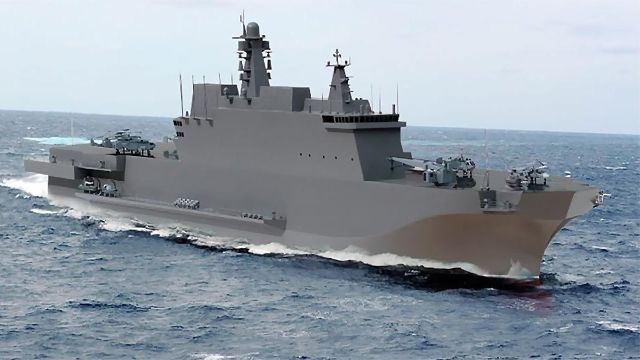A huge new Russian warship is quickly taking shape at a shipyard in Kerch, a city located in Crimea, which Russia has occupied since 2014. This ship, called the Ivan Rogov, is one of two amphibious assault ships being built as part of Russia’s Project 23900.
Satellite pictures taken in March 2025 show major progress. The ship is now around 220 meters long and 40 meters wide—a sign that construction has sped up since last July, when only the skeleton of the vessel was visible.
The Ivan Rogov is designed to carry up to 15 helicopters, 900 soldiers, and a variety of vehicles and equipment. It’s being built to give Russia stronger naval power, especially in the Black Sea, where its navy has faced serious challenges in recent years.
What makes this more surprising is that Russia is still building the ship even while facing heavy international sanctions and a costly war in Ukraine.
This ship isn’t small or ordinary. It will weigh up to 30,000 tons when complete—nearly three times the size of the Moskva, a Russian warship that sank in 2022 after being hit by Ukrainian missiles. The new vessel will also have space for 75 armored vehicles and three landing boats. It is expected to cost around 100 billion rubles, or about $1.3 billion when construction started.
Norway’s Risky K9 Howitzer Gamble Shakes Arctic Tensions
Sanctions Can’t Stop the Steel
The Zaliv Shipyard, where the Ivan Rogov is being built, has been a major center for building ships since Soviet times. But in recent years, it has struggled. That’s because many countries placed sanctions on Russia, especially after it took Crimea in 2014 and invaded Ukraine in 2022. These penalties make it harder for Russia to get advanced materials, money, and equipment from outside the country.
Even so, the ship’s construction is moving fast. Satellite images show cranes, heavy machinery, and a busy worksite, which means that Russia has either found a way to work around these problems or has become more self-reliant. Some experts believe Russia may be getting parts through third countries, though there’s no clear proof of that yet.
Building such a large and complex ship isn’t easy. It requires special steel, powerful engines, and many skilled workers. Yet, the Ivan Rogov is coming together quicker than expected. For comparison, similar ships made by the U.S. Navy can take four to five years to complete. If Russia keeps up the pace, this ship might be ready in much less time.
Russia’s Powerful MiG-41 Could Outclass US F-35 Despite Global Sanctions
This fast progress could be thanks to new building methods, like modular construction, where different parts of the ship are made separately and later joined together. Weather has also helped—spring in Kerch is usually mild, which makes outdoor construction easier than in cold, snowy areas.
Power and Problems in One Package
The Ivan Rogov is made to do a lot. It can carry helicopters that drop troops into battle or attack enemy positions. It can land vehicles and soldiers on beaches. It can even be used to help control distant seas. All of this makes it a very powerful weapon—but also a very big target.
Its helicopter team might include Ka-29 transport helicopters and Ka-52K attack helicopters. However, Russia has been having a tough time replacing helicopters lost in the war. Many Ka-29s are old, and newer models are hard to produce quickly. Getting 15 helicopters ready for this ship may be a serious challenge.
F-35 Fighter Jet Becomes $2 Trillion Disaster as Allies Abandon Costly Jet Amid Broken Promises
Also, big ships like this can be easy targets in modern warfare. In 2022, Ukraine used sea drones and missiles to sink the Moskva, showing how vulnerable large vessels can be. If the Ivan Rogov enters areas with enemy weapons nearby, it might face similar risks.
Another challenge is the location. The ship is being built in Crimea, a region many countries still say belongs to Ukraine. Its movements could be restricted, especially by Turkey, which controls the sea routes into and out of the Black Sea. Turkey has the legal right to stop warships from passing during wartime, something it did in 2022.
Despite all these issues, the Ivan Rogov continues to rise. Satellite pictures show steady activity at the shipyard, cranes lifting materials, and workers on the move. Even though Russia is under pressure from war and sanctions, this project is clearly getting attention, effort, and resources.
The Ivan Rogov might still have a long way to go, but for now, its rapid progress is sending a strong message—Russia’s shipbuilding, at least in this case, is not slowing down.


